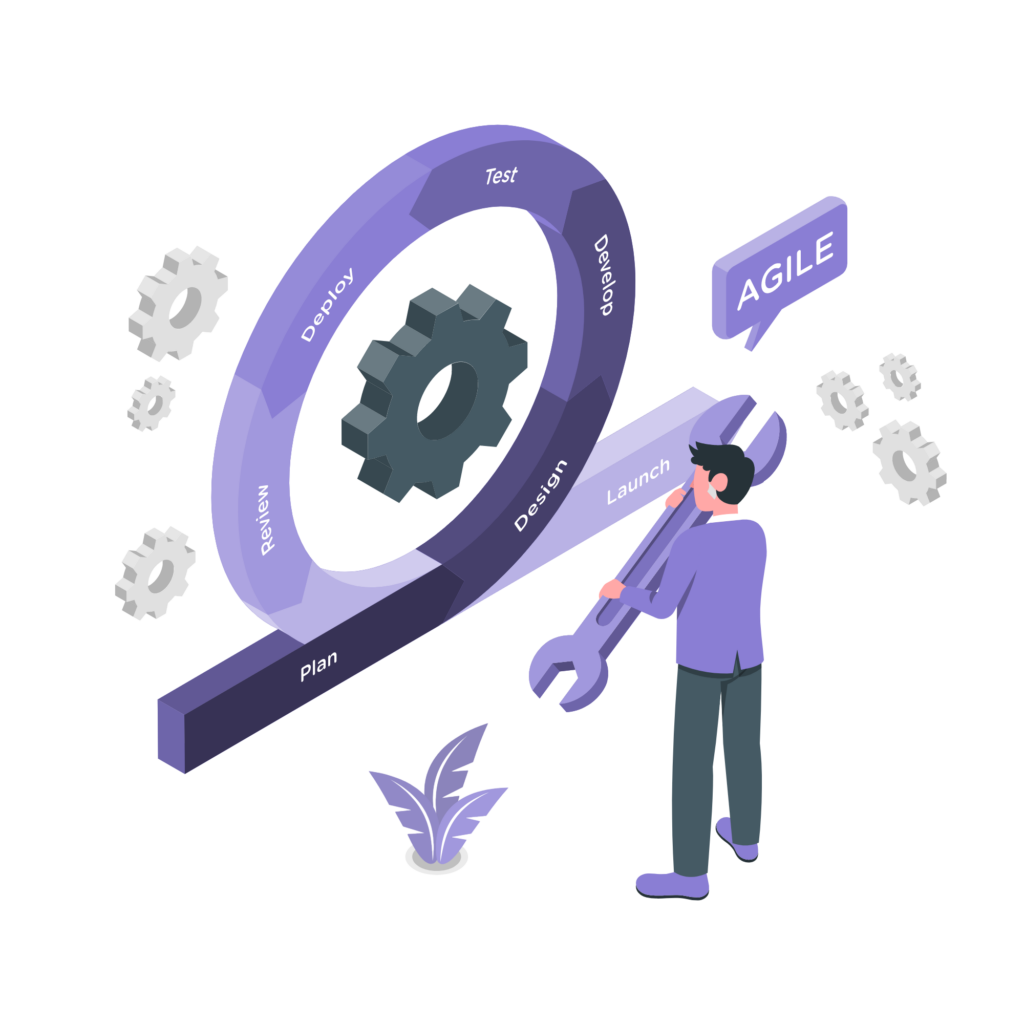How to Automate Your Business Processes with Low-Code and No-Code Solutions
Running a business with so many processes to be achieved every single day could turn into an impossible mission if the strategies you’re working on aren’t getting you the results within a reasonable period of time. From here comes the essential need for a smart solution that could get all of the apples you have in one basket instead of carrying one apple at a time. Similarly, for a business process strategy to do well, all processes have to work together in a cohesive manner instead of running them separately. The shift towards digital transformation has made it possible to get this done and solve the issue of having each process performed alone when it should be part of multiple processes that correlate to one another while using methods that guarantee the smooth flow of data between all units. Thus, the need for business automation of processes has become mandatory, no longer an option to have second thoughts about.
What is a Business Process?
A business process can simply be defined as the number of the various tasks and actions or activities you take in order to get a specific outcome done. This includes joint work among various departments, or sometimes between the members of the same team. The overall efforts invested to make this happen, from determining tasks, sharing data, hiring people to get it done, choosing a system to run it, and deciding the workflow to go with to create a business process. As you notice, this gets extremely challenging as the number of processes increases, and just for the record, not only big-sized companies have multiple processes, even small-sized ones do, and trust us when we say it does not get any easier to manage their processes even if they were less in number compared with bigger ones. Consequently, this raises the need for having an optimal solution that could solve this problem for everyone and be used by any business owner without sweating making ends meet. That is why the digital transformation revolution has brought life a smart automated solution that relies on software designed to get these processes done in an automated manner.
What is Business Automation of Processes?
The automation of business process management (BPM) refers to the use of software solutions that help manage any process automatically. Instead of having to work with different systems for each sequence of processes you’d like to manage, you can have a smart software solution that can handle any process you want with ease. It manages various processes of different departments such as the Human Resources, Billing and Finance, Customer Service, Sales, Marketing, Project Management, and the list goes on. Simple repetitive tasks like receiving orders, sending customers’ receipts, or registering new employees won’t take much of your time any more thanks to the features and functions of all tools in use. While the details of how these tools are designed or what they may offer extra varies, the primary notion remains the same.
Maestro Blocks Business Automation Solution
They say, “it’s easier said than done”, well, at Maestro Blocks we say it’s easier done than said. With the help of the smart solutions this low-code to the no-code platform offers, users will have the complete power they need to be in charge of every single detail. The Maestro Blocks low-code to no-code platform gives your business the support it’s in needs with its smartly built infrastructure that boosts the performance of handling tasks in a more agile, fast, and timely way. Maestro Blocks smart solution platform allows you to achieve amicable results via drag-and-drop features, user-friendly interface, graphical designs, and interactive tools and modules that can be easily configured and integrated with various systems. Hence, it allows you to automate your business process management from point zero to ten or integrate it with third-party programs. To give you a better idea of the ways Maestro Blocks automates business processes, follow along with us these brief steps of how it’s done, hopefully, it clears things up for you even more.
1. Process Design and Modeling
In this step, you can create the processes of your business that you need by taking advantage of a visual process designer tool that enables you to get creative in the creation process. You’ll get to create states, activities, actions, conditions, and any related events. All done in a few clicks, and you’re all set to deploy the processes you have created.
2. Form Design and Configuration
In the form design and configuration, Maestro Blocks allows you to build dynamic web forms using an easy-to-use graphical environment and connect the web-based form to the process you have created so you can proceed with the rest of the configuration as needed.
3. Process Execution
In the process of execution, you’ll be able to submit new requests, and upon the submission of these requests, all that is left is to execute them. The workflow engine routes the requests between parties in relation to that process until it’s accomplished, and the approvals are obtained from all required users.
4. Process Monitoring
The Process Admin monitors the execution of the process periodically by analyzing the data collected through the system to improve the execution of the process by utilizing dashboards as well as graphics and charts.
Conclusion
As Henry Ford once said, “Coming together is a beginning, staying together is progress, and working together is a success.” For a business to thrive it has to know how to drive and while on the road of building the foundation right realize when the need for taking a shortcut is necessary to see lasting results. Honestly speaking, this makes sense because business processes don’t work in isolation, first, you have to bring them all together and clearly decide what they are, then look for the means and tools to keep them from falling apart, and lastly learn how to work them together as a whole unit. This may have seemed difficult in the earlier day, but luckily, not anymore thanks to the low-cod to no-code platforms.






